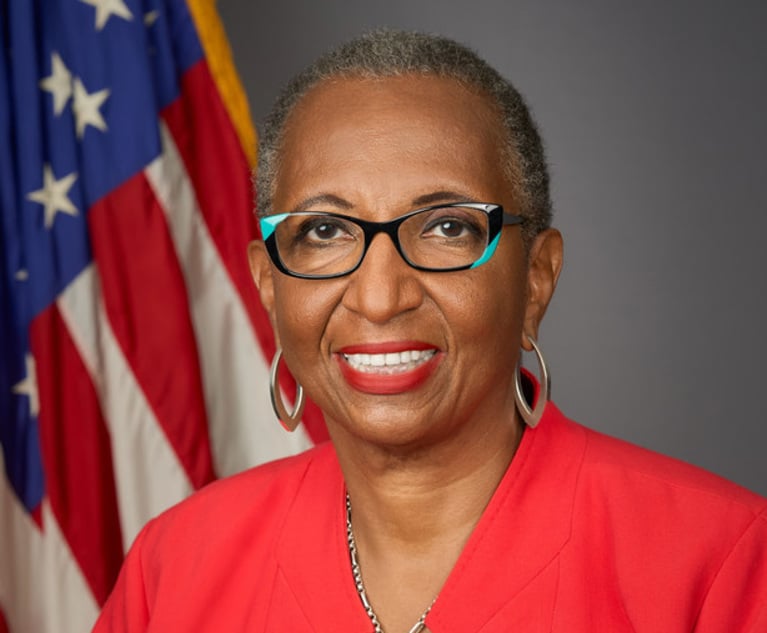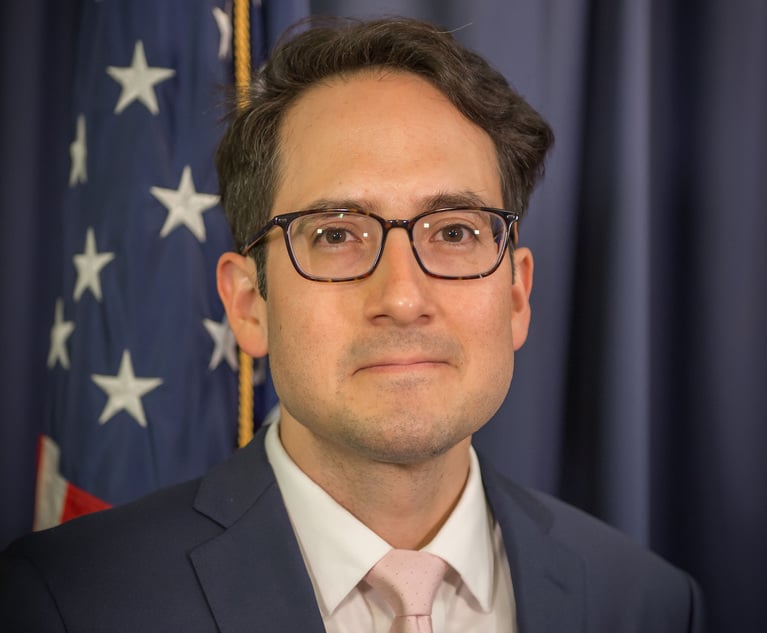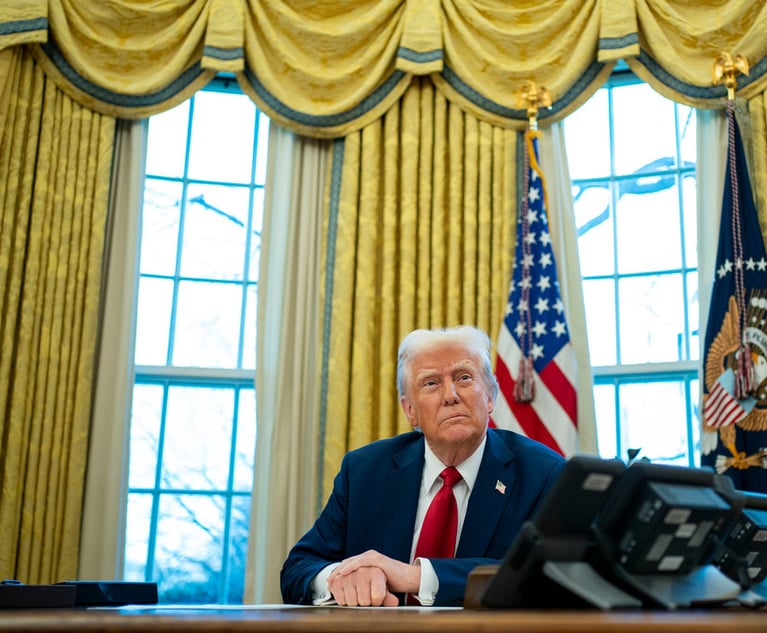Regulatory: Considering energy regulations—Wind and solar power
Wind and solar power constitute 3.6 percent of the U.S. electricity supply.
February 29, 2012 at 04:00 AM
4 minute read
The original version of this story was published on Law.com
Wind and solar power constitute 3.6 percent of the U.S. electricity supply. Both fuels enjoy enormous political support. If they could be developed in an economically competitive form, these fuels would provide dream solutions to two intractable policy problems: reducing greenhouse gas emissions and providing the country with a renewable energy source, independent of foreign suppliers. However, the costs of wind and solar power currently far exceed those of conventional fuels, such as natural gas. They are viable energy choices only when heavily subsidized by governments, due to problems presented by their physical characteristics that engineers have been unable to transcend.
Wind and solar share three characteristics that make them relatively unattractive fuel choices if judged by cost alone:
1. They have a relatively unconcentrated energy content compared to fossil fuels. They therefore require substantial capital outlays for the land and equipment necessary for commercial-scale production.
2. Wind and solar power are subject to substantial limitations on siting, which necessitate substantial investments in electric transmission capacity. The most attractive locations for wind farms are in the Great Plains, and for solar in the desert Southwest. These areas are remote from the urban clusters where demand is concentrated. Offshore wind facilities can be located closer to East Coast cities and present fewer obstacles to construction of large turbines. However, the costs of offshore wind farms are significantly greater and the operating environment more challenging, due to waves, tides and the corrosive effect of salt water.
3. Wind and solar power are available only intermittently—when the wind is blowing or the sun shining. For example, the required wind flow to produce electricity efficiently occurs only one-third of the time. Moreover, the availability of electricity from renewable sources is not correlated with the demand cycle. Winds tend to blow harder at night and during the spring and fall, but demand peaks in summer during the day. As a result of these intermittency problems, wind and solar generating facilities must be backed up by power plants fired by conventional fuels that can generate electricity on short notice, as changes in natural conditions make renewable power unavailable. The necessity of backup facilities greatly increases the effective costs of wind and solar and their high prices could become significant if renewables grew to constitute a substantial part of national generating capacity.
To encourage growth of these renewables, wind and solar power have benefitted from direct and indirect subsidies at both the federal and state levels. Federal support for these fuels includes both tax credits and direct financial payments, including $7 billion in funds provided by the 2009 stimulus law. Critically, a majority of the states have imposed on electricity suppliers mandatory minimum requirements for purchase of renewable energy. Without these subsidies and mandates, wind and solar would not be competitive sources of electric power. Similar outcomes have occurred in Europe (notably Germany and Spain), where the commitment to wind power has been stronger and more consistent. In sum, despite substantial efforts, wind and solar remain higher cost alternatives, and large-scale reliance on these renewable energy sources might spark consumer opposition as the cost consequences became apparent.
Much as the dream of renewable fueled automobiles is stymied by limits on battery technology, the future of wind and solar as baseload sources of electricity depends upon surmounting known technological constraints. Under these circumstances, the proper policy for government is to fund the basic research to address these issues and support construction of demonstration facilities, but not to select winners and losers among competing firms that seek to market new technologies commercially.
This content has been archived. It is available through our partners, LexisNexis® and Bloomberg Law.
To view this content, please continue to their sites.
Not a Lexis Subscriber?
Subscribe Now
Not a Bloomberg Law Subscriber?
Subscribe Now
NOT FOR REPRINT
© 2025 ALM Global, LLC, All Rights Reserved. Request academic re-use from www.copyright.com. All other uses, submit a request to [email protected]. For more information visit Asset & Logo Licensing.
You Might Like
View All
Fired NLRB Member Seeks Reinstatement, Challenges President's Removal Power

GOP-Led SEC Tightens Control Over Enforcement Investigations, Lawyers Say

GOP Now Holds FTC Gavel, but Dems Signal They'll Be a Rowdy Minority
6 minute read
Trump's Inspectors General Purge Could Make Policy Changes Easier, Observers Say
Trending Stories
Who Got The Work
J. Brugh Lower of Gibbons has entered an appearance for industrial equipment supplier Devco Corporation in a pending trademark infringement lawsuit. The suit, accusing the defendant of selling knock-off Graco products, was filed Dec. 18 in New Jersey District Court by Rivkin Radler on behalf of Graco Inc. and Graco Minnesota. The case, assigned to U.S. District Judge Zahid N. Quraishi, is 3:24-cv-11294, Graco Inc. et al v. Devco Corporation.
Who Got The Work
Rebecca Maller-Stein and Kent A. Yalowitz of Arnold & Porter Kaye Scholer have entered their appearances for Hanaco Venture Capital and its executives, Lior Prosor and David Frankel, in a pending securities lawsuit. The action, filed on Dec. 24 in New York Southern District Court by Zell, Aron & Co. on behalf of Goldeneye Advisors, accuses the defendants of negligently and fraudulently managing the plaintiff's $1 million investment. The case, assigned to U.S. District Judge Vernon S. Broderick, is 1:24-cv-09918, Goldeneye Advisors, LLC v. Hanaco Venture Capital, Ltd. et al.
Who Got The Work
Attorneys from A&O Shearman has stepped in as defense counsel for Toronto-Dominion Bank and other defendants in a pending securities class action. The suit, filed Dec. 11 in New York Southern District Court by Bleichmar Fonti & Auld, accuses the defendants of concealing the bank's 'pervasive' deficiencies in regards to its compliance with the Bank Secrecy Act and the quality of its anti-money laundering controls. The case, assigned to U.S. District Judge Arun Subramanian, is 1:24-cv-09445, Gonzalez v. The Toronto-Dominion Bank et al.
Who Got The Work
Crown Castle International, a Pennsylvania company providing shared communications infrastructure, has turned to Luke D. Wolf of Gordon Rees Scully Mansukhani to fend off a pending breach-of-contract lawsuit. The court action, filed Nov. 25 in Michigan Eastern District Court by Hooper Hathaway PC on behalf of The Town Residences LLC, accuses Crown Castle of failing to transfer approximately $30,000 in utility payments from T-Mobile in breach of a roof-top lease and assignment agreement. The case, assigned to U.S. District Judge Susan K. Declercq, is 2:24-cv-13131, The Town Residences LLC v. T-Mobile US, Inc. et al.
Who Got The Work
Wilfred P. Coronato and Daniel M. Schwartz of McCarter & English have stepped in as defense counsel to Electrolux Home Products Inc. in a pending product liability lawsuit. The court action, filed Nov. 26 in New York Eastern District Court by Poulos Lopiccolo PC and Nagel Rice LLP on behalf of David Stern, alleges that the defendant's refrigerators’ drawers and shelving repeatedly break and fall apart within months after purchase. The case, assigned to U.S. District Judge Joan M. Azrack, is 2:24-cv-08204, Stern v. Electrolux Home Products, Inc.
Featured Firms
Law Offices of Gary Martin Hays & Associates, P.C.
(470) 294-1674
Law Offices of Mark E. Salomone
(857) 444-6468
Smith & Hassler
(713) 739-1250






